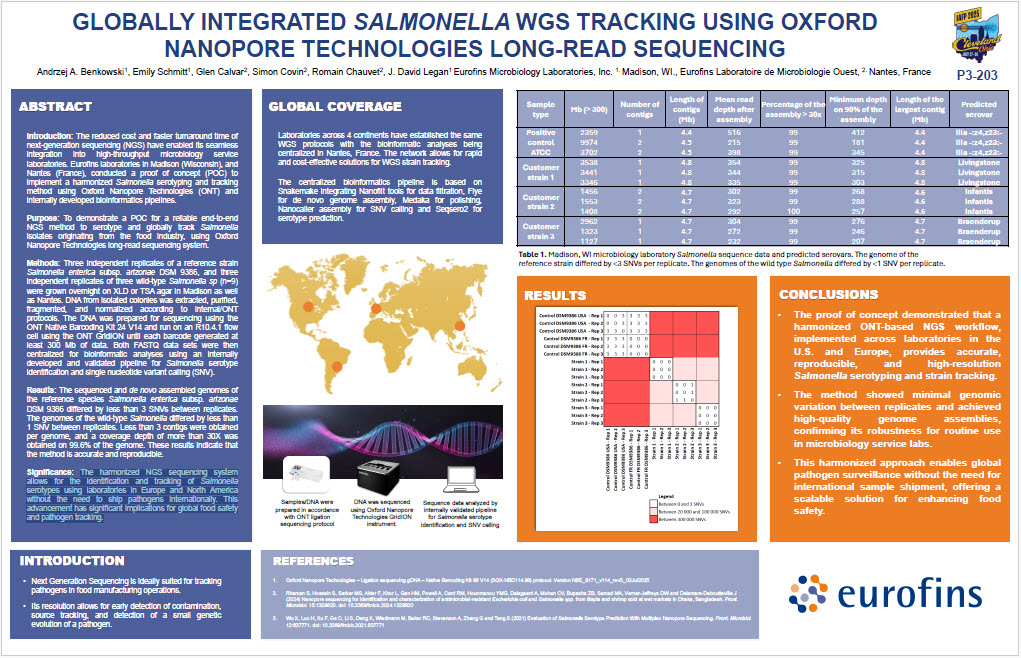Globally Integrated Salmonella WGS Tracking Using Oxford Nanopore Technologies Long-Read Sequencing

Andrzej Benkowski 1, Emily Schmitt 1, Glen Calvar 2, Simon Covin 2, Romain Chauvet 2 and J. David Legan 1
1 Eurofins Microbiology Laboratories, Inc., Madison, WI; 2 Eurofins Laboratoire de Microbiologie Quest, Nantes, France
ABSTRACT
Introduction
The reduced cost and faster turnaround time of next-generation sequencing (NGS) have enabled its seamless integration into high-throughput microbiology service laboratories. Eurofins laboratories in Madison (Wisconsin), and Nantes (France), conducted a proof of concept (POC) to implement a harmonized Salmonella serotyping and tracking method using Oxford Nanopore Technologies (ONT) and internally developed bioinformatics pipelines.
Purpose
To demonstrate a POC for a reliable end-to-end NGS method to serotype and globally track Salmonella isolates originating from the food industry, using Oxford Nanopore Technologies long-read sequencing system.
Methods
Three independent replicates of a reference strain Salmonella enterica subsp. arizonae DSM 9386, and three independent replicates of three wild-type Salmonella sp (n=9) were grown overnight on XLD or TSA agar in Madison as well as Nantes. DNA from isolated colonies was extracted, purified, fragmented, and normalized according to internal/ONT protocols. The DNA was prepared for sequencing using the ONT Native Barcoding Kit 24 V14 and run on an R10.4.1 flow cell using the ONT GridION until each barcode generated at least 300 Mb of data. Both FASTQ data sets were then centralized for bioinformatic analyses using an internally developed and validated pipeline for Salmonella serotype identification and single nucleotide variant calling (SNV).
Results
The sequenced and de novo assembled genomes of the reference species Salmonella enterica subsp. arizonae DSM 9386 differed by less than 3 SNVs between replicates. The genomes of the wild-type Salmonella differed by less than 1 SNV between replicates. Less than 3 contigs were obtained per genome, and a coverage depth of more than 30X was obtained on 99.6% of the genome. These results indicate that the method is accurate and reproducible.
Significance
The harmonized NGS sequencing system allows for the identification and tracking of Salmonella serotypes using laboratories in Europe and North America without the need to ship pathogens internationally. This advancement has significant implications for global food safety and pathogen tracking.
View the poster
Questions on how this information is applicable to your food process?




